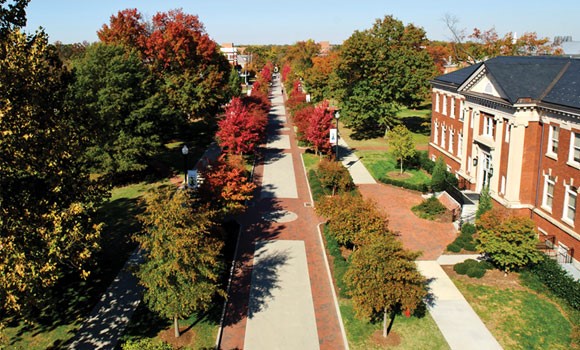- Home >
- Inside UNCG
Welcome to UNCG
- History of UNCG
- UNCG at a Glance
- UNCG Mission and Vision
- UNCG Strategic Plan
- Office of the Chancellor
Experience UNCG
About Greensboro
UNCG at a glance

UNCG Today
With nearly 18,000 students and over 3,000 employees, UNCG is the largest state university in the Piedmont Triad and has an annual economic impact of more than $1 billion. The campus has grown to include 30 residence halls and 28 academic buildings on 250-plus acres.
UNCG takes pride in being a learner-centered public research university with eight colleges and schools.
Enrollment
In Fall 2022, UNCG enrolled 17,978 students, including 14,198 undergraduates and 3,780 graduate students. Sixty-seven percent of students are female. Twenty-seven percent of students are Black, and over 13 percent are Latino.
Classes & Faculty
UNCG has more than 175 areas of undergraduate study and 250 areas of graduate study. Student-to-faculty ratio is approximately 17:1. Forty-five percent of full-time faculty are tenured, and 82 percent of full-time faculty hold a doctorate or other terminal degrees in their fields.
Academic Calendar
Two semesters, August to May, and two summer sessions.
Campus Life
UNCG's picturesque campus includes 28 academic buildings and 30 residence buildings on 250-plus acres. Opportunities for students include more than 250 student organizations, 17 Division I athletic teams, intramurals, club sports, wellness center, campus golf course, student newspaper, student literary magazine, student radio station, music and choral groups, drama and dance performance groups, concert and lecture series, film series, internships, Outdoor Adventures program, fraternities and sororities, and community service.
Costs
For full-time students living on campus, 2022-23 basic costs (including tuition, fees and room and board) totaled approximately $17,428 for in-state students and $32,587 for out-of-state students.
Housing
UNCG Housing and Residence Life offers an array of on-campus living options for students, including:
- Three residential colleges for students who want to live and enroll in courses with their learning community peers while developing close, meaningful relationships with faculty;
- Seven living-learning communities for students who want to live and enroll in courses with their learning community peers while participating in related co-curricular programs; and
- An honors college residence hall.





